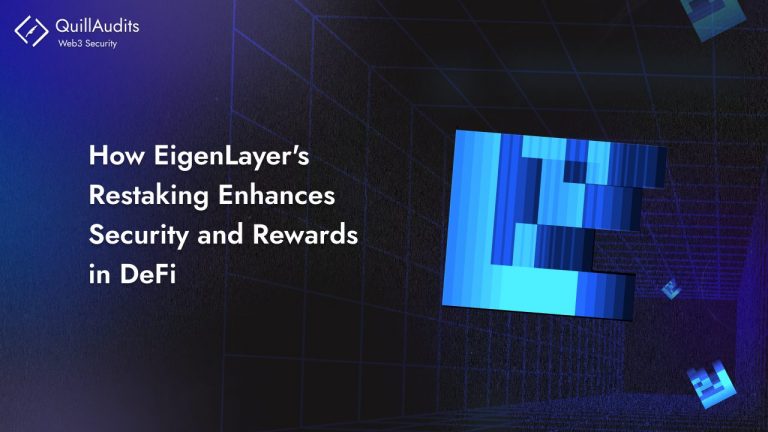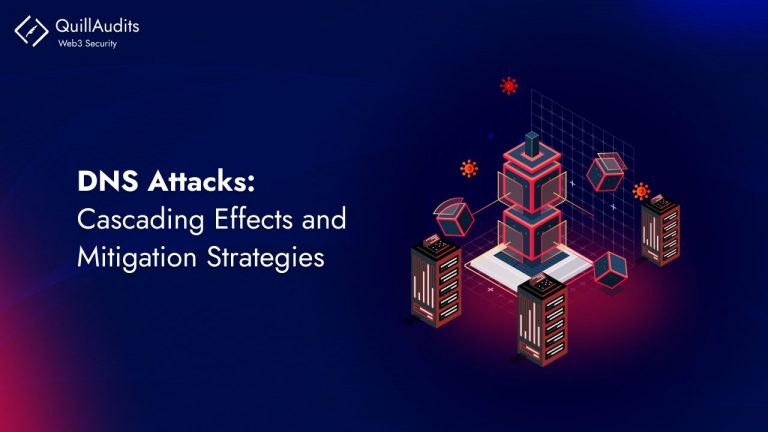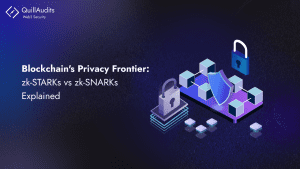


Understanding Fuzzing and Fuzz Testing: A Vital Tool in Web3 Security
Read Time: 5 minutes When it comes to smart contracts, ensuring the robustness and security of code is paramount. Many techniques are employed to



How EigenLayer’s Restaking Enhances Security and Rewards in DeFi
Read Time: 7 minutes Decentralized finance (DeFi) relies on Ethereum staking to secure the blockchain and maintain consensus. Restaking allows liquid staking tokens to



ERC 404 Standard: Everything You Need to Know
Read Time: 7 minutes Introduction Ethereum has significantly shaped the crypto world with its introduction of smart contracts and decentralized applications (DApps). This has



DNS Attacks: Cascading Effects and Mitigation Strategies
Read Time: 8 minutes Introduction DNS security is vital for a safe online space. DNS translates domain names to IP addresses, crucial for internet



EIP-4844 Explained: The Key to Ethereum’s Scalability with Protodanksharding
Read Time: 7 minutes Introduction Ethereum, the driving force behind dApps, has struggled with scalability. High fees and slow processing have limited its potential.



QuillAudits Powers Supermoon at ETH Denver!
Read Time: 4 minutes Calling all the brightest minds and leaders in the crypto world! Are you ready to build, connect, and innovate at



Decoding the Role of Artificial Intelligence in Metaverse and Web3
Read Time: 7 minutes Introduction Experts predict a transformative shift in global software, driven by AI and ML, marking the dawn of a new



Understanding Fuzzing and Fuzz Testing: A Vital Tool in Web3 Security
Read Time: 5 minutes When it comes to smart contracts, ensuring the robustness and security of code is paramount. Many techniques are employed to





ERC 404 Standard: Everything You Need to Know
Read Time: 7 minutes Introduction Ethereum has significantly shaped the crypto world with its introduction of smart contracts and decentralized applications (DApps). This has





DNS Attacks: Cascading Effects and Mitigation Strategies
Read Time: 8 minutes Introduction DNS security is vital for a safe online space. DNS translates domain names to IP addresses, crucial for internet





EIP-4844 Explained: The Key to Ethereum’s Scalability with Protodanksharding
Read Time: 7 minutes Introduction Ethereum, the driving force behind dApps, has struggled with scalability. High fees and slow processing have limited its potential.





QuillAudits Powers Supermoon at ETH Denver!
Read Time: 4 minutes Calling all the brightest minds and leaders in the crypto world! Are you ready to build, connect, and innovate at



Decoding the Role of Artificial Intelligence in Metaverse and Web3
Read Time: 7 minutes Introduction Experts predict a transformative shift in global software, driven by AI and ML, marking the dawn of a new



Transforming Assets: Unlocking Real-World Asset Tokenization
Read Time: 7 minutes In the blockchain, real-world assets (RWAs) are digital tokens that stand for tangible and conventional financial assets, including money, raw



Blockchain’s Privacy Frontier: zk-STARKs vs zk-SNARKs Explained
Read Time: 7 minutes Introduction In 2022, Epic Games CEO Tim Sweeney expressed that zero-knowledge proofs (ZKPs) would be a crucial aspect of blockchain
Search Blog
Categories
Categories
Popular Posts





ERC 404 Standard: Everything You Need to Know















QuillAudits Powers Supermoon at ETH Denver!
100x Return- "Georgian Coinbase account is identical to Aladdin's magic lamp"🧞
Coinbase (COIN) users in the Eastern European country of Georgia were able to exploit a price bug that allowed them to cash out their holdings for 100 times the exchange rate, pocketing thousands of dollars in profit.







